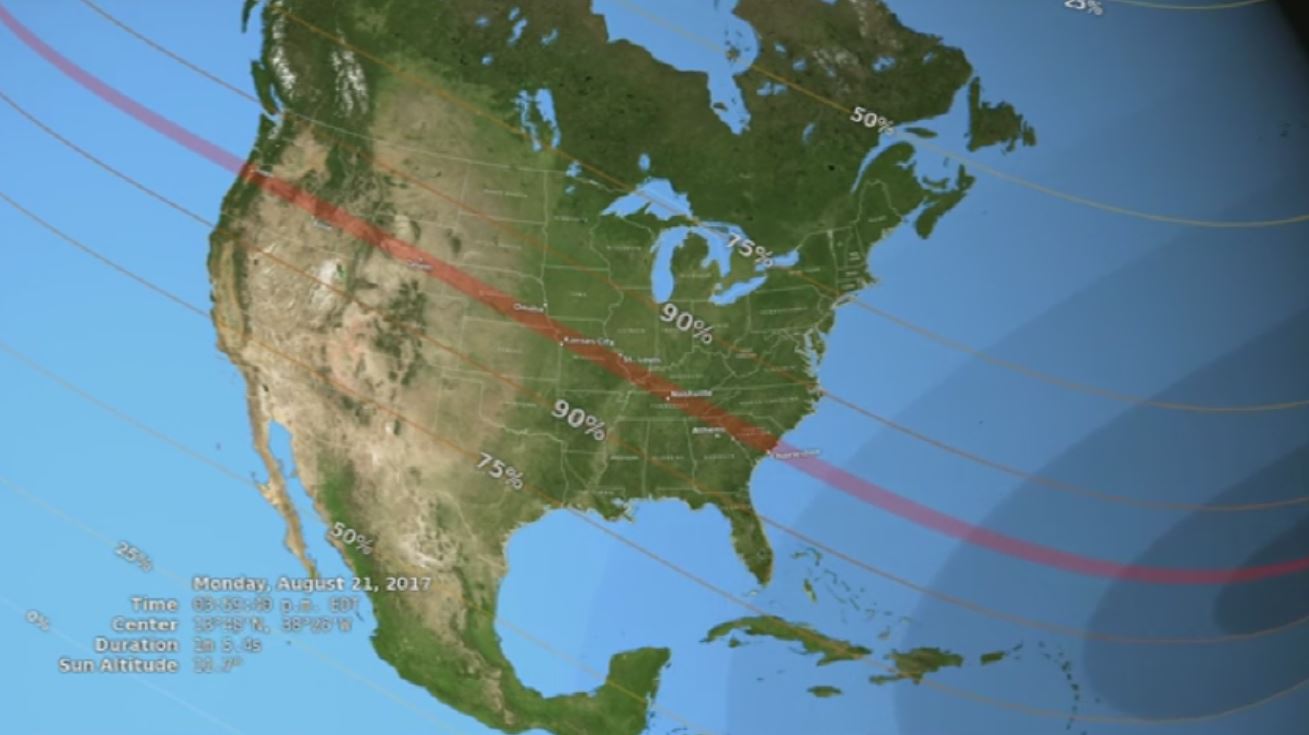Want more eclipse coverage? Head to 9news.com/eclipse!
If the sun disappears on Aug. 21, 2017 it won’t mark the end of the world as we know it.
Instead, as you’ve probably heard multiple times, it will be the first eclipse visible only in the United States since the country was founded in 1776.
While Colorado isn’t in the path of totality, two bordering states are: Wyoming and Nebraska. In fact, you can get a killer view if you’re willing to drive a few hours north from Denver. http://on9news.tv/2tE5ILw
Maybe it’s been a while since you’ve been in an astronomy class. So, you might be wondering how, exactly, an eclipse works.
Here’s what you need to know:
Basically, a solar GIF happens when the moon passes between the sun and the Earth, blocking the sun’s light.
Wait, you might be asking yourself. The moon is way, way smaller than the sun, but the way distances work out, they’re the same size to our eyes.
The sun is 400 times wider than the moon, but it is also 400 times father away.
The GIF below illustrates how eclipses work:
Can’t see the GIF? Click here: http://gph.is/2tDFHw2
Eclipses are only visible in certain parts of the world at a certain time. What makes the Aug. 21 eclipse so special is the fact that it’s only visible in the U.S.
The next one will be visible for Texas to New England on April 8, 2014 – and the last was on Feb. 26, 1979 in Washington, Oregon, Idaho, Montano and North Dakota.
Twelve states are in the path of totality for this eclipse: Oregon, Idaho, Wyoming, Nebraska, Kansas, Missouri, Illinois, Kentucky, Tennessee, Georgia, North Carolina and South Carolina.
The GIF below illustrates how the path of totality works:
Can’t see the GIF? Click here: http://gph.is/2uCfoHD

